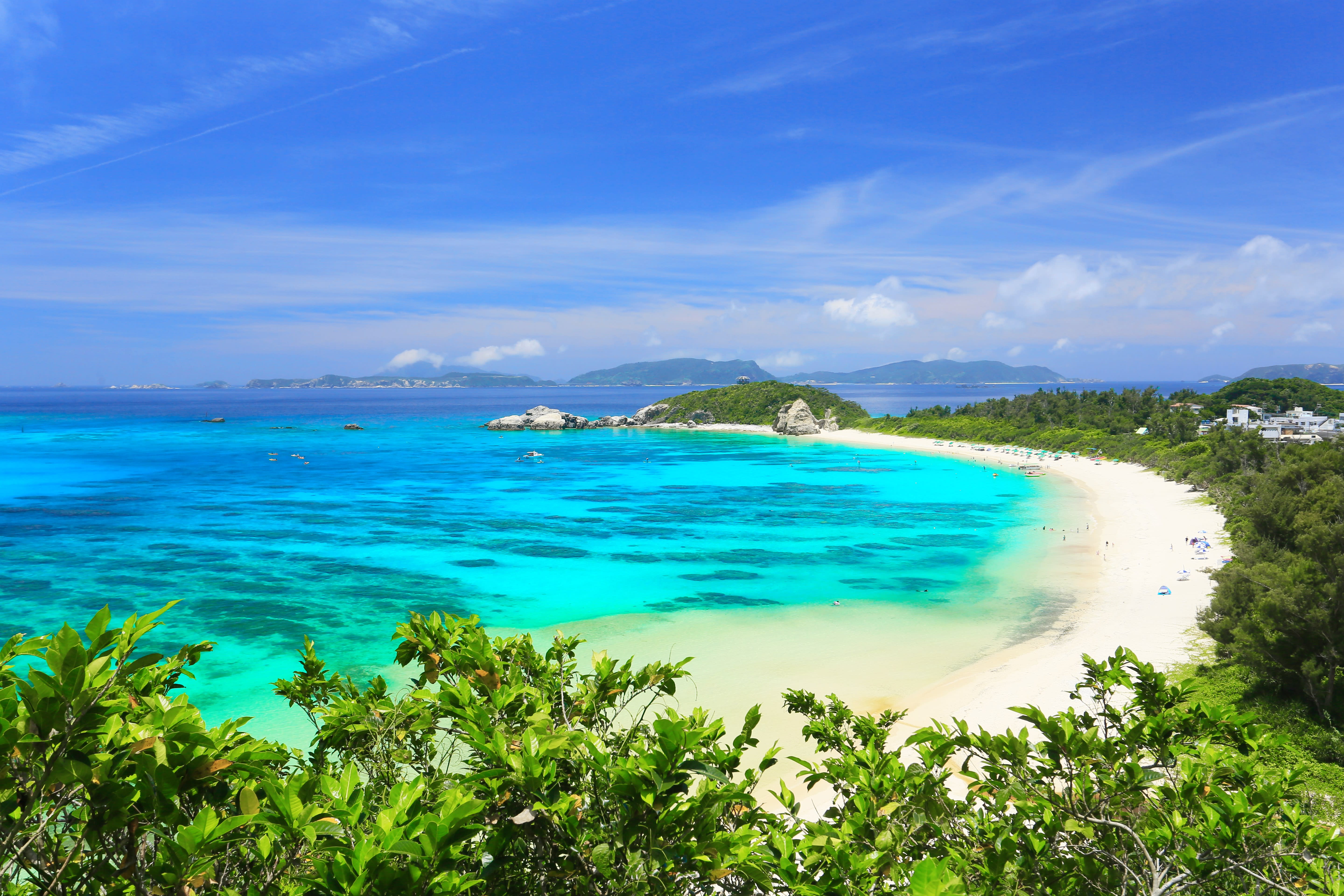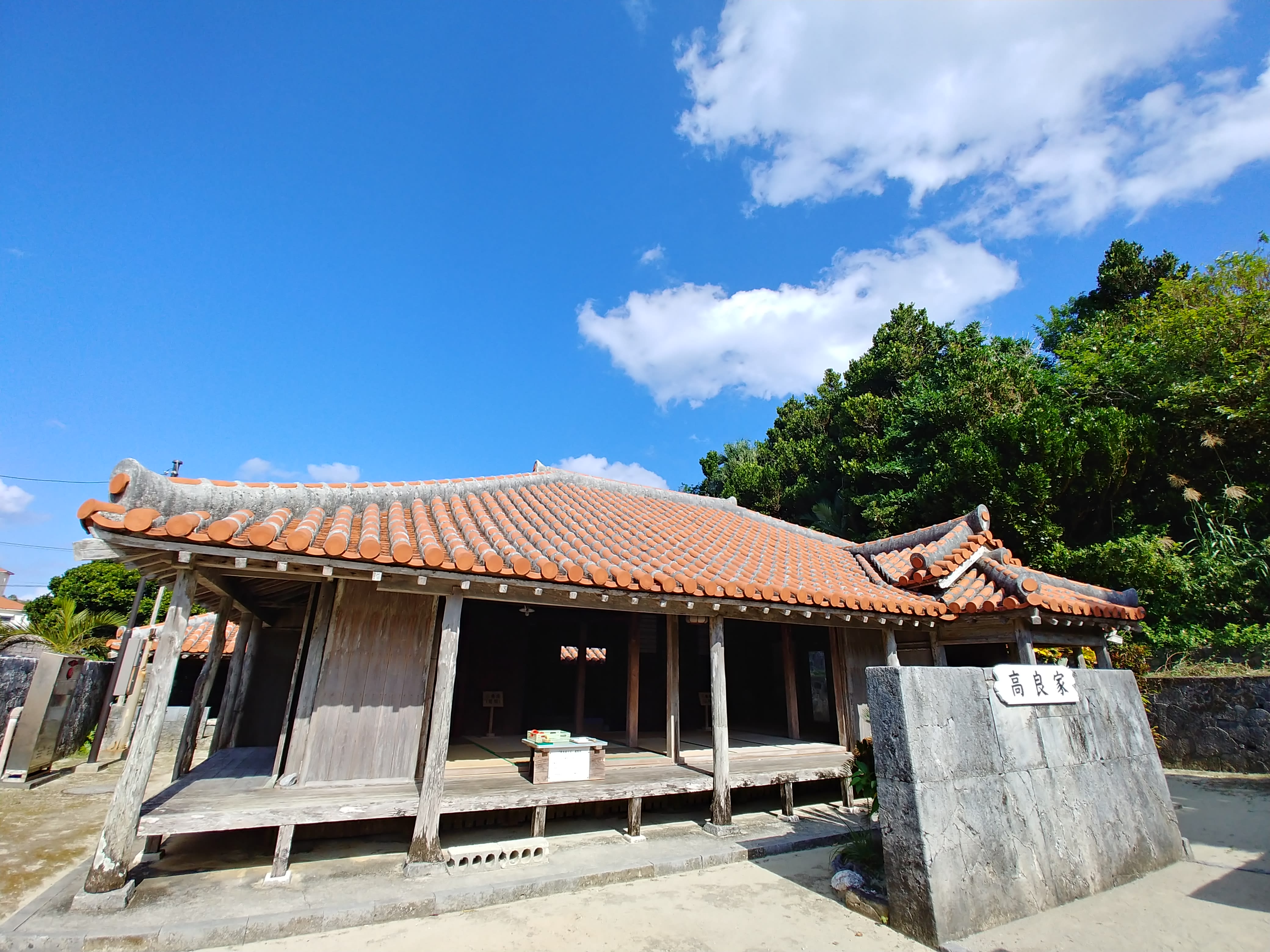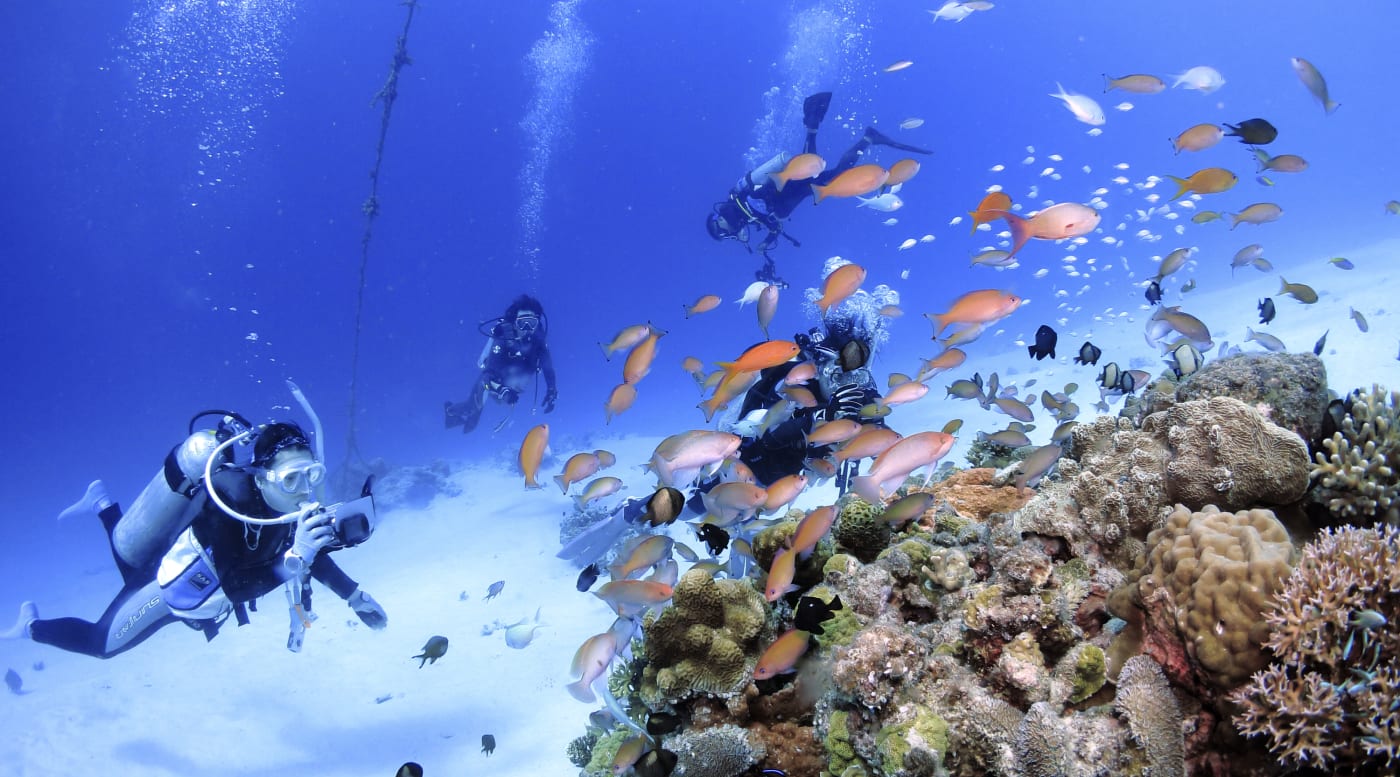Tokashikijima Island
Tokashikijima Island is the largest island of the archipelago. Aharen Beach on the island's western side is popular for swimming, snorkeling and diving, and there’s plenty of fine sand for sunbathing. Aharen Village, adjacent to the beach, offers several restaurants and lodging options.
Tokashikijima and the other islands of Keramashoto have observatories that offer commanding views of island-dotted seascapes and sea cliffs. You may spot whales from these lookouts in winter. Visit Tokashikijima's Western Observatory at the National Okinawa Youth Friendship Center, the highest point on the island, for views of Okinawa's main island and Naha.
Many nature paths cross the island, including the Teruyama Enchi Nature Trail and Mihanabaru Nature Trail. These trails show off the plants and wildlife of the Keramas, such as large tree nymph butterflies. At the end of the Teruyama Enchi Nature Trail is the Teruyama Observatory, which offers panoramic vistas and a chance to catch a glimpse of the humpback whales during winter. Tokashiku Beach, also known as Turtle Beach, is lauded as one of the best places in Okinawa to swim with sea turtles.
At the island’s southern tip is the Aharen Cape Observatory, where you can walk along a path with stunning views of sandstone cliffs.
If you visit in the summer, you’re likely to hear the songs of birds such as the ruddy kingfisher, while in the spring the area is bathed in color from the blossoming Kerama tsutsuji (Rhododendron scabrum G.Don) and the fruiting red bayberries.

Aharen Beach
Zamamijima Island
The second largest of the Kerama Islands, Zamamijima is known for its pristine beaches and clear turquoise waters. They are ideal for swimming, snorkeling and diving. You can rent a car or bike in Zamami Village to get around the island.
Pristine Furuzamami Beach—which earned a two-star rating from the Michelin Green Guide—has shallow waters teeming with fish along a large coral reef.
Spot green sea turtles on quiet Ama Beach, where some turtles come to lay their eggs during the spawning season.
A particularly good site to spot humpback whales in winter is Inazaki Observatory, in the north of Zamamijima. From this vantage point, you can see as far as Agunijima, Tonakijima and Kumejima islands on clear days.
Akajima Island
Nishibama Beach on Akajima Island is another prime spot for marine sports and sunbathing on fine white sands. From here you can explore the coral reefs and see schools of colorful tropical fish as well as green sea turtles. Relax and take in views of the beach from the chic Nishibama Terrace.
Sea kayaking and stand-up paddle boarding are ideal ways to view the marine wildlife here, as well as take in the beautiful views of the islands, cliffs and ocean.

Takara Residence
Gerumajima Island
Gerumajima Island's main attraction is the Takara Residence, a perfectly preserved captain’s house thought to have been built in the latter part of the 19th century. It is a fine example of an original Okinawan dwelling and has been designated an Important Cultural Property.
Stone walls made of Ryukyu limestone are representative of Geramajima's traditional building styles.
Kerama deer (Cervus nippon keramae) roam the island, which have smaller heads and antlers compared to the Japanese deer on Kyushu.

Kerama deer
Culture
Keramashoto National Park has many historical sites and important cultural assets, many of which revolve around the ocean. Every year each village holds a festival to celebrate the sea gods and pray for plentiful catches and safe voyages.
The Kerama Islands used to be a stopover from the main island of Okinawa to China in the 19th century. It is believed that a top seafarer on a ship that sailed to the Qing Dynasty during this time made his home on Gerumajima Island, using the skills he learned as a seaman to build the Takara Residence, which is known in particular for the coral walls surrounding it. The residence is now a National Important Cultural Property.
U.S. forces made their first landing on the Kerama Islands in World War II during the Battle of Okinawa. Visitors will find old battle sites and war memorials scattered across the islands.






















